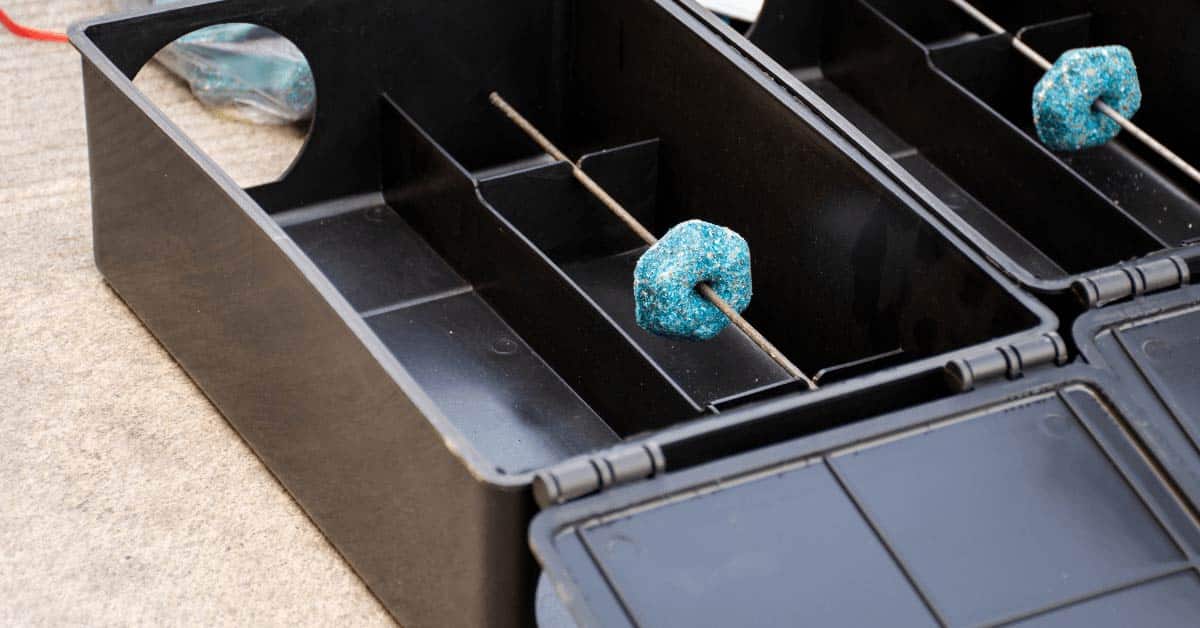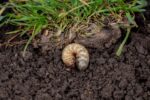
Rodent Control and Baiting: How Does a Rodent Bait Station Work?
During the cooler seasons in South Florida, mice and rats from the outside may seek out shelter in your home, and these unwanted guests can send you scrambling to find effective rodent control options, such as rodent baiting, trapping, or rodent exclusion. The sight of rodents in your home is unsettling and can make the hair stand up on the back of your neck. If you have spotted rodents around your neighborhood, there may be rodents nesting near or within your property.
But don’t worry, Hulett has you covered with our complete guide to rodent control with our full service programs, whether you need baiting, trapping, or an exclusion. No one wants to have to deal with rats in their home, so if you see any signs of rodent activity in your area, call the professionals for a free inspection. A trained professional will complete a thorough inspection of your property, and be able to discuss with you and your family the right rodent control treatment method for your home or business.
Read on to learn everything you need to know about our full service programs, such as utilizing rodent baiting stations, rodent trapping, or rodent exclusion.
What Are Rodent Baiting Stations and how are they different from Rodent Traps?
A rodent bait station is a lockable, tamper-resistant, and self-weighted box that is placed around the exterior perimeter of your home or business out of view or in areas with suspected rodent activity for rodent control. These boxes will help to reduce the rodent population and pressure on your property, helping to prevent invasion. These boxes contain a ramp-style entrance designed for rodents, and contain a specific bait that is securely rodded in place for the rodents to feed, helping to gain control of the feeding rodents. Whereas rodent traps are best utilized on the interior of homes, such as in attics or kitchens, to remove active rodent infestations from the insides of homes.
Where to Place Rodent Baiting Stations or Traps
The best locations for exterior rodent bait stations are between the rodent’s nest and food source, primarily on the outside perimeter of your home. Mice and rats often follow the same routes as they move from the nest to their food source, so you may be able to determine the location of feeding and nesting spots by inspecting the perimeter of the home, looking specifically for rodent entry points, runways, rodent grease or chew marks, the nest or burrows themselves, or droppings and urine. These can all indicate rodent activity, and that a bait station should be placed nearby.
Some common places of rodent activity and baiting besides along the walls where you see grease tracks include the following target locations:
- Near garbage cans
- Near dumpsters
- By entry points
- By rodent water sources
- Near nests and burrows
However, if you have heard rodent activity in your walls or attic during the evenings, or have found rodent droppings, urine, gnaw marks, or nests on the interior of your home such as in the attic or kitchen, then interior rodent trapping is likely to be recommended to best remove the infesting rodents.
How Effective Is Exterior Rodent Baiting and Interior Trapping?
Rodent baiting can be an effective measure for reducing rodent populations that are living and breeding on your property, near your home, or possibly even entering your home, too. By reducing the activity on the exterior of your property, you lessen the pressure and chances of your home being invaded by rodents. However, rodent baiting alone may not address the root cause of an infestation in your home. Active infestations will likely need to be trapped, as well. And if there are openings in your home’s exterior, whether that be at a roof intersection, soffit vent in disrepair, crawl space vents that are torn, vent stacks or A/C chases that are open, etc., these can all act as rodent entry points. Something else to consider, if there are trees where the branch limbs are in contact with the roof, this can act as a bridge for rodents to gain access to your roof. Once the rodents are on your roof, they can commonly find an entry point into your attic. For best rodent prevention, these entry points should be sealed. This is referred to as rodent exclusion. Often, a rodent exclusion is needed to seal these entry points and prevent rodents from invading in the future.
Rodent Exclusion
Your home may have small holes, cracks, or gaps through which rodents can enter. If these entry points are accessible to rodents, even with rat baiting or trapping, new infestations are always possible. Any openings in your home’s exterior that are larger than a quarter-inch are accessible to rodents. These rodent passageways should be filled or sealed off to prevent any four-legged invaders from entering in the future. Additionally, any trees or shrubs that can act as a bridge to your home’s roof should be trimmed back.
Integrated Rodent Control
There is no universal answer to which method — baiting, trapping, or exclusion — is the best solution to a rodent problem. The nature of the rodent infestation and home characteristics can dictate which strategies are most effective. Often integrated rodent management is the best approach because some rodent problems may require multiple methods. Sanitation measures like proper food storage can also be an effective tool in eliminating and preventing rodent infestations.
Sanitation
In addition to the warmth your home provides, rodents are attracted to food and water sources within it. The Centers for Disease Control and Prevention (CDC) knows that rodents spread disease and advise taking the following steps to eliminate rodent food sources:
- Promptly clean grills or outdoor cooking areas after use.
- Clean up food spills and stains.
- Wash the dishes shortly after using them.
- Store food in thick plastic or metal containers that have secure lids.
- Do not leave pet bowls of food and water out overnight.
- Keep compost far from your house (100 feet or more).
- Use garbage cans made from metal or thick plastic and that have a well-sealed lid.
- Keep animal feed in thick plastic or metal containers.
What Should I Do if I Have a Rodent Problem?
What should I do if my home is infested with rodents? If you want a rodent-free home or property, it’s best to call the professionals. When rodents are scurrying around in your home, you cannot afford to waste time. A rodent infestation is a serious problem, and it is best to leave the control methods to knowledgeable technicians. At Hulett, we train our experienced technicians on the latest strategies and techniques for eliminating rodent populations, and they have the expertise to strategically trap, exclude entry points, or place tamper-resistant, secure, and effective rodent bait stations around your property. We also offer free rodent inspections. When you need to get rid of rodents for good, just call Hulett!



